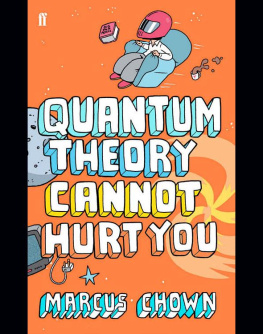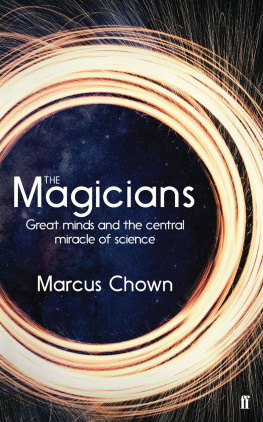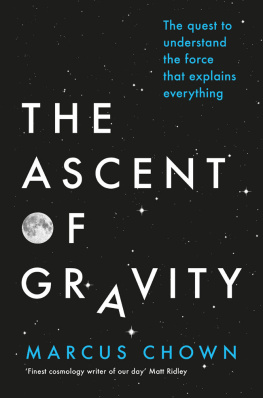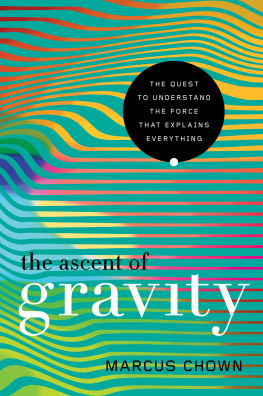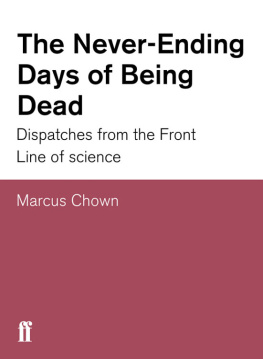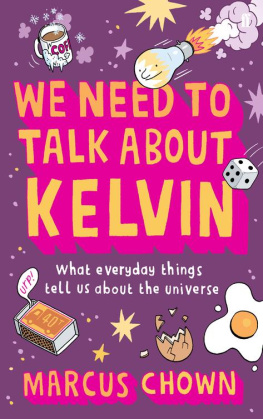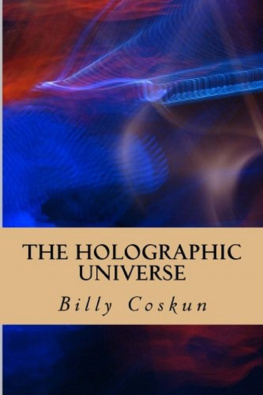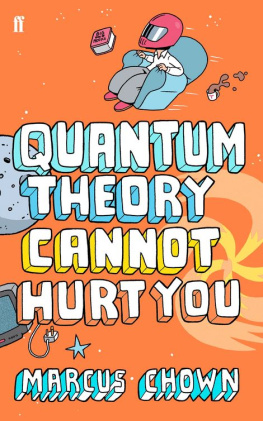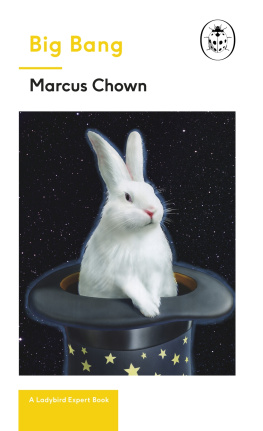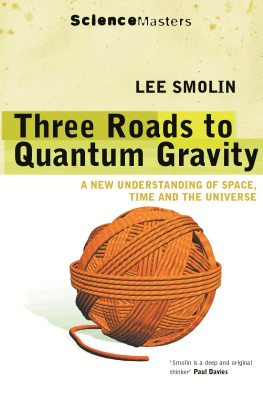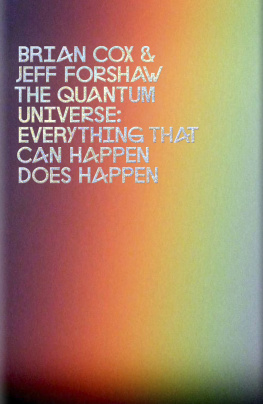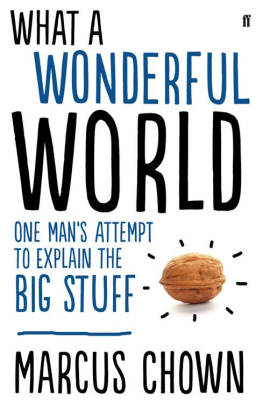Chown - Quantum theory cannot hurt you: a guide to the universe
Here you can read online Chown - Quantum theory cannot hurt you: a guide to the universe full text of the book (entire story) in english for free. Download pdf and epub, get meaning, cover and reviews about this ebook. City: London, year: 2007;2008, publisher: Faber and Faber, genre: Children. Description of the work, (preface) as well as reviews are available. Best literature library LitArk.com created for fans of good reading and offers a wide selection of genres:
Romance novel
Science fiction
Adventure
Detective
Science
History
Home and family
Prose
Art
Politics
Computer
Non-fiction
Religion
Business
Children
Humor
Choose a favorite category and find really read worthwhile books. Enjoy immersion in the world of imagination, feel the emotions of the characters or learn something new for yourself, make an fascinating discovery.
Quantum theory cannot hurt you: a guide to the universe: summary, description and annotation
We offer to read an annotation, description, summary or preface (depends on what the author of the book "Quantum theory cannot hurt you: a guide to the universe" wrote himself). If you haven't found the necessary information about the book — write in the comments, we will try to find it.
Quantum theory cannot hurt you: a guide to the universe — read online for free the complete book (whole text) full work
Below is the text of the book, divided by pages. System saving the place of the last page read, allows you to conveniently read the book "Quantum theory cannot hurt you: a guide to the universe" online for free, without having to search again every time where you left off. Put a bookmark, and you can go to the page where you finished reading at any time.
Font size:
Interval:
Bookmark:
To Patrick, who, when Im down and wondering why everyone seems to be against me, consoles me by saying: Thats because youre a complete bastard, Marcus!
One of the following is true:
- Every breath you take contains an atom breathed out by Marilyn Monroe.
- There is a liquid that can run uphill.
- You age faster at the top of a building than at the bottom.
- An atom can be in many different places at once, the equivalent of you being in New York and London at the same time.
- The entire human race would fit in the volume of a sugar cube.
- One per cent of the static on a television tuned between stations is the relic of the Big Bang.
- Time travel is not forbidden by the laws of physics.
- A cup of coffee weighs more when it is hot than when it is cold.
- The faster you travel, the slimmer you get.
No, Im joking. They are all true!
As a science writer I am constantly amazed by how much stranger science is than science fiction, how much more incredible the Universe is than anything we could possibly have invented. Despite this, however, very few of the extraordinary discoveries of the past century seem to have trickled through into the public consciousness.
The two towering achievements of the past 100 years are quantum theory, our picture of atoms and their constituents, and Einsteins general theory of relativity, our picture of space, time, and gravity. Between them the two explain virtually everything about the world and about us. In fact, it can be argued that quantum theory has actually created the modern world, not only explaining why the ground beneath our feet is solid and why the Sun shines but also making possible computers and lasers and nuclear reactors. Relativity may not be as ubiquitous in the everyday world. Nevertheless, it has taught us that there are things called black holes from which nothing, not even light, can escape; that the Universe has not existed forever but was born in a titanic explosion called the Big Bang; and that time machinesremarkablymay be possible.
Although I have read many popular accounts of these topics, the explanations have often left me baffled, even with my science background. I can only guess what it must be like for nonscientists.
Einstein said: Most of the fundamental ideas of science are essentially simple and may, as a rule, be expressed in a language comprehensible to everyone. All my experience tells me he was right. My idea in writing this book was to try to help ordinary people understand the principal ideas of 21st-century physics. All I had to do was identify the key ideas behind quantum theory and relativity, which turn out to be deceptively simple, and then show how absolutely everything else follows from them logically and unavoidably.
Easier said than done. Quantum theory in particular is a patchwork of fragments, accrued over the past 80 years, that nobody seems to have sewn together into a seamless garment. Whats more, crucial pieces of the theory, such as decoherencewhich explains why atoms but not people can be in two places at onceseem to be beyond the power of physicists to communicate in any intelligible way. After corresponding with many experts, and beginning to think that decoherence should be renamed incoherence, it dawned on me that maybe the experts didnt completely understand it themselves. In a way this was liberating. Since a coherent picture seemed not to exist, I realised that I had to piece together my own from insights gleaned from different people. Because of this, many of the explanations given here you will not find anywhere else. I hope they help lift some of the fog that surrounds the key ideas of modern physics and that you can begin to appreciate what a breathtakingly amazing Universe we find ourselves in.
H OW WE DISCOVERED THAT EVERYTHING IS MADE OF ATOMS AND THAT ATOMS ARE MOSTLY EMPTY SPACE
A hydrogen atom in a cell at the end of my nose was once part of anelephants trunk.
Jostein Gaarder
We never had any intention of using the weapon. But they were such aterribly troublesome race. They insisted on seeing us as the enemy despiteall our efforts at reassurance. When they fired their entire nuclearstockpile at our ship, orbiting high above their blue planet, our patiencesimply ran out.
The weapon was simple but effective. It squeezed out all the emptyspace from matter.
As the commander of our Sirian expedition examined the shimmeringmetallic cube, barely 1 centimetre across, he shook his primaryhead despairingly. Hard to believe that this was all that was left of thehuman race!
If the idea of the entire human race fitting into the volume of a sugar cube sounds like science fiction, think again. It is a remarkable fact that 99.9999999999999 per cent of the volume of ordinary matter is empty space. If there were some way to squeeze all the empty space out of the atoms in our bodies, humanity would indeed fit into the space occupied by a sugar cube.
The appalling emptiness of atoms is only one of the extraordinary characteristics of the building blocks of matter. Another, of course, is their size. It would take 10 million atoms laid end to end to span the width of a single full stop on this page, which raises the question, how did we ever discover that everything is made of atoms in the first place?
The idea that everything is made of atoms was actually first suggested by the Greek philosopher Democritus in about 440 BC. Picking up a rockor it may have been a branch or a clay pothe asked himself the question: If I cut this in half, then in half again, can I go on cutting it in half forever? His answer was an emphatic no. It was inconceivable to him that matter could be subdivided forever. Sooner or later, he reasoned, a tiny grain of matter would be reached that could be cut no smaller. Since the Greek for uncuttable was a-tomos, Democritus called the hypothetical building blocks of all matter atoms.
Since atoms were too small to be seen with the senses, finding evidence for them was always going to be difficult. Nevertheless, a way was found by the 18th-century Swiss mathematician Daniel Bernoulli. Bernoulli realised that, although atoms were impossible to observe directly, it might still be possible to observe them indirectly. In particular, he reasoned that if a large enough number of atoms acted together, they might have a big enough effect to be obvious in the everyday world. All he needed was to find a place in nature where this happened. He found onein a gas.
Bernoulli imagined a gas like air or steam as a collection of billions upon billions of atoms in perpetual frenzied motion like a swarm of angry bees. This vivid picture immediately suggested an explanation for the pressure of a gas, which kept a balloon inflated or pushed against the piston of a steam engine. When confined in any container, the atoms of a gas would drum relentlessly on the walls like hailstones on a tin roof. Their combined effect would be to create a jittery force that, to our coarse senses, would seem like a constant force pushing back the walls.
But Bernoullis microscopic explanation of pressure provided more than a convenient mental picture of what was going on in a gas. Crucially, it led to a specific prediction. If a gas were squeezed into half its original volume, the gas atoms would need to fly only half as far between collisions with the container walls. They would therefore collide twice as frequently with those walls, doubling the pressure. And if the gas were squeezed into a third of its volume, the atoms would collide three times as frequently, trebling the pressure. And so on.
Font size:
Interval:
Bookmark:
Similar books «Quantum theory cannot hurt you: a guide to the universe»
Look at similar books to Quantum theory cannot hurt you: a guide to the universe. We have selected literature similar in name and meaning in the hope of providing readers with more options to find new, interesting, not yet read works.
Discussion, reviews of the book Quantum theory cannot hurt you: a guide to the universe and just readers' own opinions. Leave your comments, write what you think about the work, its meaning or the main characters. Specify what exactly you liked and what you didn't like, and why you think so.

